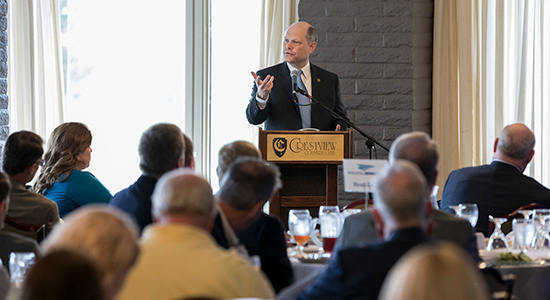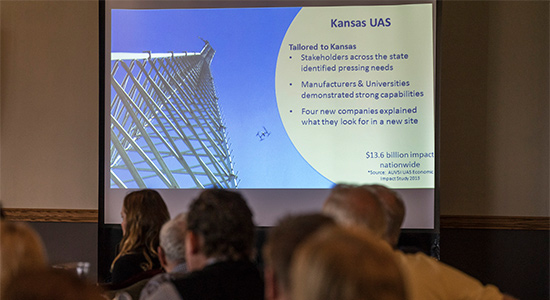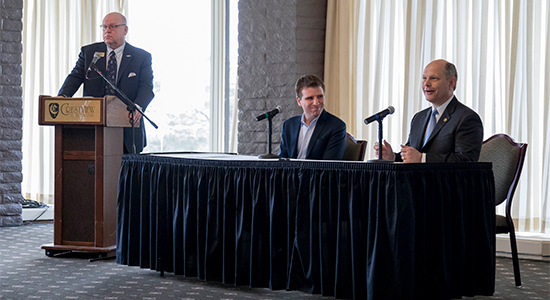Welcome to a Drone-filled World
04.06.17 · Greteman Group
The future can terrify or thrill. Fortunately, the vision set forth at the March meeting of the Wichita Aero Club did more of the latter.
Speakers Ben Marcus and Bob Brock proselytized about the wonders already here and others yet to come in the unmanned aircraft systems (UAS) industry. The change, they said, will be transformative. Yes, there are privacy and security concerns, but what opportunities.
Unlocking the Future of Flight
Marcus, CEO of AirMap and earlier cofounder of jetAVIVA, and Brock, the nation’s first state-level director of unmanned aircraft systems, painted a picture of possibilities. Think of a device that can today be made with a 3-D printer in less than an hour – or bought at Best Buy. A device that can fly up, down, forward, backward, even upside down. That you can cloak and put lights on.
They posed the question: What can you do with a flying erector set? They talked about the mind-bogglingly endless uses – search and rescue, disaster management, package delivery, aerial photography/videography, safety inspections, border patrol, law enforcement, wildlife monitoring/poaching prevention, storm tracking/forecasting, even agriculture.
“A farmer with 35,000 acres has a lot of need for eyes,” Brock said.

Brock said UAS has the potential to be a $13.6 billion industry and has more than 770,000 drones registered in the United States now, greatly outnumbering manned aircraft. In the past three months alone, registrations increased by 100,000. The pace is moving fast. And we need to move even faster to keep up. Wichita Aero Club President Dave Franson mentioned he’d heard that the proliferation of UAS and the people piloting them are projected to grow by a factor of 10 by the end of the year.
It’s been mandatory to register drones since 2015. The FAA requires hobbyists to get a single ID for all the drones they operate, while commercial operators must register each drone separately. The FAA’s hard at work to help create new standards for identifying, tracking and detecting unauthorized UAS. Director Brock agreed that to build a UAS industry in Kansas, “We may need to raise standards.”

Training a New Kind of Flier
The goal is to train people to become commercial drone operators, not pilots, Brock said. He said future needs will be less for pilots in command than for more autonomous operators who manage fleets of drones. He threw out 20 as possible fleet size.

“AirMap is making drones part of everyday life,” Marcus said. The company, based in Santa Monica, California, does this by offering open-source software for airspace management and drone navigation. It supports more than 100,000 drone flights daily with airspace intelligence and services to support safe flying and communication with others in low-altitude airspace.
The aviation industry initially was cool to the idea of UAS and the air-traffic-management issues it brings. So, it’s no wonder the biggest laugh from the Aero Club came from Marcus’ comment about the Dutch police training eagles to bring down drones. And Brock noted that he may be fine with Amazon Prime delivering a package to his home via drone, but what about the 16 houses it must fly over on the way; can the drone avoid someone shooting it down? A change in thinking will need to take place for some.*
*That goes for dogs, too. A family member in rural Missouri recently heard a drone outside her two-story bedroom window, then got a text from Amazon saying she’d just received a delivery. When she went to retrieve it, she discovered the big, buzzing thing from the sky had driven her German shepherd into attack mode. And the package was no more.
This column ran in the April 6th issue of BlueSky Business Aviation News.
